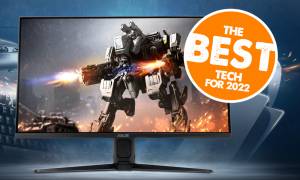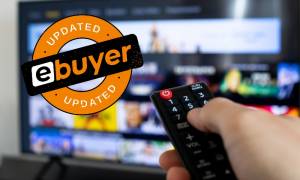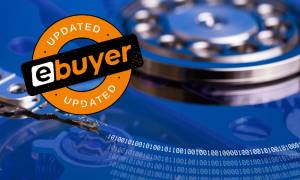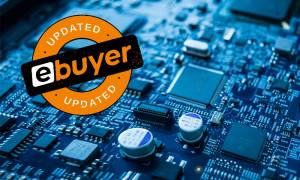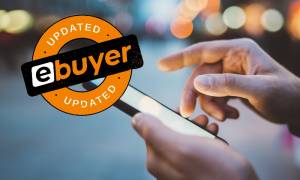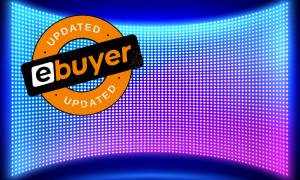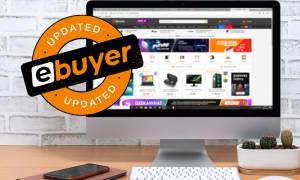Most schools now have interactive whiteboards (IWBs) in every classroom. Interactive whiteboards are the size of a usual class whiteboard, but are connected to a teacher’s computer, which means that whatever the teacher is doing on their computer will appear on the interactive whiteboard.
Education has arrived at a crossroads in the UK. Students have grown up in a smart, connected world, yet teachers are struggling to connect with them using old technology. Students have access anywhere and anytime to knowledge and digital services.
Yet many schools and teachers are still trying to engage them with outdated methods. You only have to look at how young people embrace technology – smartphones, laptops, tablets and so on. How many times have you, as an adult, had to ask a ‘young person’ to solve a tech issue for you? That’s right – technology plays a huge part in their lives, even if not in yours!
So interactive whiteboards are a cool way to engage.
Browse Ebuyer for interactive whiteboards
The teacher has an IWB pen which they use on the IWB, which is either put into ‘pen mode’ for writing and drawing, or ‘cursor mode’ for clicking on items on the screen, just as you would do on a computer.
Static chalkboards and paper-based lessons just don’t connect with students in the digital age. Teachers forced to rely on old methods to reach students are, nowadays, sadly doomed to fail.
Interactive smart boards invite students to engage with the lessons, and teachers aren’t limited in what they can present to students. Movies, PowerPoint presentations and graphics can all be used, in addition to standard text-based lessons. We’re going to take a look at smartboard technology in the classroom and how teachers can better engage with students whene everyone’s back to school.
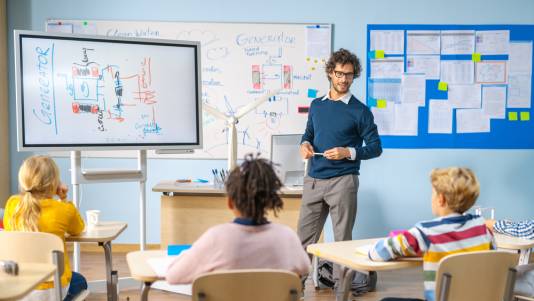
The Definition of Interactive Smart Boards
An interactive smart board, also known as an electronic whiteboard, is a classroom tool that allows images from a computer screen to be displayed onto a classroom board using a digital projector. The teacher or a student can “interact” with the images directly on the screen using a tool or even a finger.
With the computer connected to the internet or a local network, teachers can access information around the world. They can do a quick search and find a lesson they used previously. Suddenly, a wealth of resources is at the teacher’s fingertips.
For teachers and students, the interactive whiteboard is a powerful benefit to the classroom. It opens up the students to collaboration and closer interaction to the lessons. Multimedia content can be shared and used in lectures, keeping students much more engaged.
Interactive Whiteboards are the future
Interactive whiteboard technology encourages active learning in students. Students ask more questions and take more notes, enabling more effective group activities such as brainstorming and problem-solving.
More and more teachers are using smart board technology in the classroom. Here are some of the key ways in which teachers are engaging with students and how they can use this technology:
Presenting Additional Content on the Whiteboard
The whiteboard shouldn’t replace teaching or lecture time in the classroom. Instead, it should enhance the lesson and provide opportunities for students to better engage with the information. The teacher has to prepare additional materials that can be used with the smart technology before class starts – such as short videos, infographics, or problems the students can work on using the whiteboard.
Maths
Teachers can show children very explicitly how to carry out various mathematical tasks. With a large virtual protractor, for example, teachers can show children how to measure angles. Teachers can demonstrate how to group items for division, draw bar charts and symmetrical lines or show children the moving hands of a clock to demonstrate time intervals.
Highlight Important Information
Smart technology can be used to highlight essential information as you work through a lesson. Before the lesson begins, you can outline the sections to be covered in class. As each section begins, you can break down the key topics, definitions, and important data for students on the whiteboard. This can also include graphics and videos in addition to text. This will help students not only with note taking, but also to review future topics you’ll be covering in future.
Group Problem Solving
Centre the class around problem solving. Present the class with a problem, then pass over the interactive whiteboard to the students to let them solve it. With the smart board technology as the centre of the lesson, students can better collaborate in the classroom. The digital technology unlocks the internet as they work, allowing students to connect the lesson to technology they use every day.
Answer Student Questions
Engage the students using the interactive whiteboard to explore answers to questions from the class. Look up additional information or data using the smart technology. Write the question on the whiteboard and then work through the answer with the students. Let them see how you answer the question or pull in additional or data. When you are finished, you can save the results of the question and send it to the students in an email for later reference. How convenient is that?
Browse Ebuyer for interactive whiteboards
Smartboard Technology in the Classroom
For schools struggling to connect students to classroom lessons or keep students engaged, smart technology like interactive whiteboards is an ideal solution. An interactive whiteboard in the classroom provides students with a level of technology they can recognise and understand. It enhances collaboration and invites interaction with the lesson. Afterwards, students can see how the technology they use connects to the lessons they learn in school.
Interactive whiteboard technology allows for the integration of various other technologies to enhance student learning. Any device you can think of like computers, microscopes, cameras, and video cameras can be attached to the boards to enhance instruction. As a result, the possibilities are near endless.

Connected to the internet
Interactive whiteboards are connected to the internet which gives you a resource of online tools and information. Teachers have access to various sources to enhance and support their lessons with video, articles, images, learning tools, and more. Students also have a rich resource for research and learning.
Enhanced Lessons
Interactive whiteboards integrate various learning styles into one experience. Students can learn by seeing, hearing, and interacting with the board through touch. This equips teachers with new, innovative ways to teach the same subject material. Because of this, students learn better and remember more.
Various media types can be displayed on an interactive whiteboard. Whether photos, graphs, maps, illustrations, or videos- teachers have an abundance of options. You can create creative lessons to inspire your students.

Interactive Learning
Interactive whiteboards allow children to interact with the learning material. They become a part of the lesson and can even teach each other. Their understanding of the subject is seen through touching, drawing, or writing on the board. Educational games can be played by entire classrooms. They also provide immediate feedback, so students and teachers can easily assess student progress.
Browse Ebuyer for interactive whiteboards
Easy to Use
Interactive whiteboards are clean and require very low maintenance. No chalk or markers or other writing utensils are required. Data is modified using a specialised pen for highlighting, drawing, and writing. Therefore, there is no mess. It’s just that easy.
Proven Effectiveness
Students are more attentive in the classroom. Comprehension improves. Test scores rise. Literacy increases. Students learn better and remember more. When children engage more in the classroom, learning always increases.




